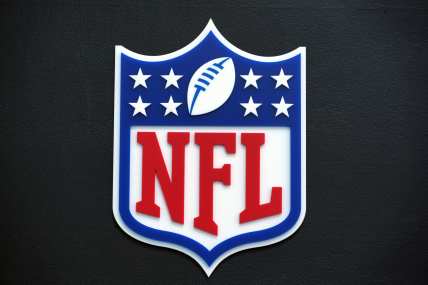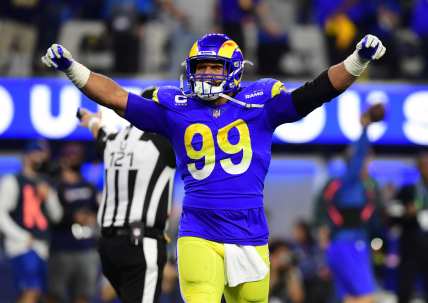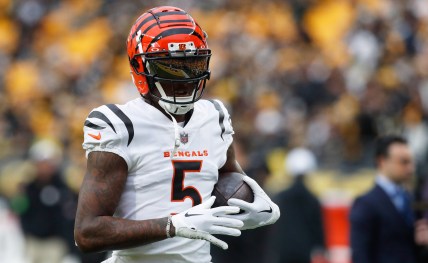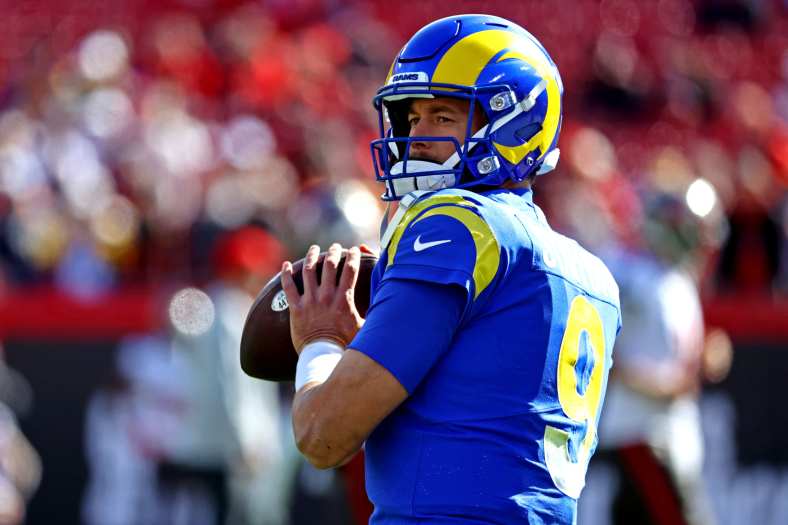
When the Los Angeles Rams traded two first-round picks for Matthew Stafford many joked about the franchise always mortgaging its future for the present. It went against the consensus philosophy of draft-and-develop. Now, even if the Rams don’t win Super Bowl LVI, they have changed the NFL.
For years, we’ve seen teams largely follow the same blueprint. Outside of the occasional blockbuster trade every few years and the small free-agent splashes, rosters are built through the NFL Draft. It’s the cheapest way to acquire talent and in a sport with a salary cap, playing within the rules is imperative.
Winning is the top priority for players and coaches, but general managers also think about longevity. We see Pro Bowl talent made available for trade every offseason, with even more names thrown around in the rumor mill. Bust most contenders tend to stay away, wanting to preserve their premium draft picks to potentially land a cheap, young impact player.
Les Snead, the Rams’ general manager since 2012, saw that and went against the grain. Los Angeles took an all-in approach in 2018, culminating in an NFC championship and a heartbreaking loss in Super Bowl LIII.
The 2018 Rams roster featured Jared Goff, Todd Gurley, Brandin Cooks, Ndamukong Suh, Michael Brockers, Aqib Talib and Marcus Peters among its key players. After failing to hoist the Lombardi Trophy, Los Angeles didn’t tear it down and retool through the NFL Draft.
Related: Los Angeles Rams OT Andrew Whitworth’s speech reveals how he inspired NFL player
Overhaul on Los Angeles Rams roster after 2018
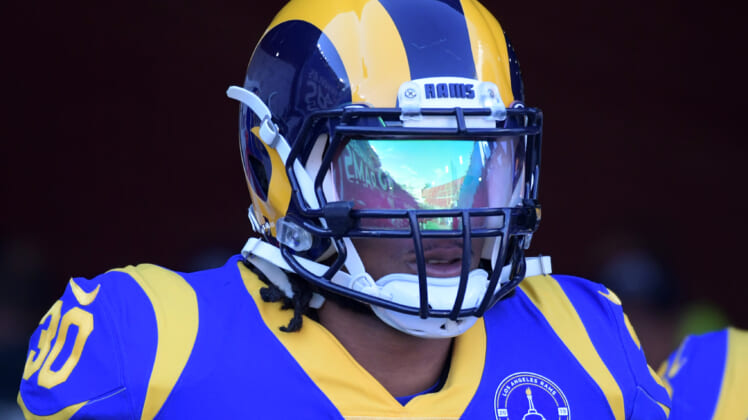
Instead, Snead became more aggressive. Los Angeles didn’t retain Suh the following offseason and it wasn’t the biggest shakeup on the defensive side. The Rams traded Peters to the Baltimore Ravens on Oct. 15, 2019 and sent two first-round picks (2020 and 2021) to the Jacksonville Jaguars for Jalen Ramsey on the same day. Weeks later, Talib was sent to the Miami Dolphins.
Los Angeles played that 2019 season with edge rushers Dante Fowler and Clay Matthews (19.5 combined sacks), but fell short of the playoffs with a 9-7 record. Once again, Snead made huge moves to dramatically alter the roster to build a championship contender.
He cut Todd Gurley, parting ways with one of the highest-paid NFL players amid his huge contract. Once it became clear that arthritic knees sapped the All-Pro back’s greatness, Los Angeles moved on. It also cut ties with Matthews, let linebacker Cory Littleton walk in free agency and shipped Cooks to the Houston Texans.
Of the 22 offensive and defensive starters on the 2018 Los Angeles Rams roster, only 10 remained in the 2020 season. They went 10-6 that year, losing in the Divisional Round. After another disappointing result, Snead was even more aggressive in 2021.
Related: If you’re a fan of the Rams, check out #RamsHouse rumors, rankings, and news here.
How the 2021 Rams reached the Super Bowl
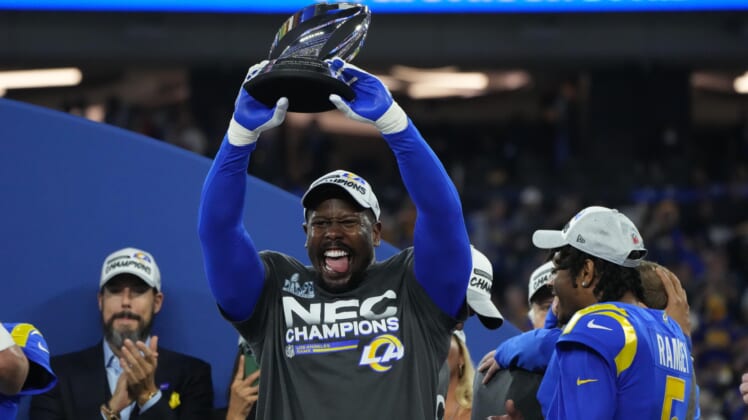
Heading into the 2021 offseason, Snead earned his reputation for being the most aggressive general manager in the NFL. Without making a single first-round pick since 2016, the result of trading up for Goff, Snead did even more.
Recognizing the need to upgrade at quarterback, Los Angeles sent two first-round picks (2022 and 2022) and a 2021 third-round pick to the Detroit Lions for Stafford and the ability to dump Goff’s contract. It signaled this organization’s commitment to shake things up when necessary, no matter the cost.
“The model is working. It’s allowing us to consistently win games, consistently contend for NFC West. We’ll try to use our [draft] picks in an innovative, creative way and sometimes it will be picking players in the draft and sometimes it will be using them to go acquire players.”
Los Angeles Rams general manager Les Snead on team’s approach to roster building, via NY Post
Of course, Snead wasn’t done. Needing impact players to strengthen the pass rush and receiving corps. So, Los Angeles signed Odell Beckham Jr. when he became available, offering him more money than the Green Bay Packers and a great shot to compete for a Super Bowl. That move came just 10 days after Snead traded the Rams’ 2022 second- and third-round picks for edge rusher Von Miller.
Now, thanks to injuries (Robert Woods) and departures0, only four of the Rams’ starters (Donald, Kupp, Andrew Whitworth, Rob Havenstein) from Super Bowl LIII will play for them in Super Bowl LVI. Snead largely built a new starting lineup and became the best team in the NFC once again.
This approach doesn’t disregard the NFL Draft entirely. Los Angeles doesn’t get here without contributions from many of its Day 2 and 3 picks from the 2015 (Havenstein), 2016 (Higbee), 2017 (Kupp, Sebastian Joseph-Day), 2018 (Brian Allen, Joseph Noteboom), 2019 (Taylor Rapp, Darrell Henderson, David Long, Greg Gaines, David Edwards) and 2020 (Cam Akers, Jordan Fuller) draft classes.
It also relied on multiple moves in free agency (OBJ, Whitworth, Leonard Floyd, A’Shawn Robinson) to reach the Super Bowl.
In so many aspects of football, NFL teams are trying to replicate models that led to success. With the Rams reaching the Super Bowl for a second time through Snead’s unique approach, you can bet many contenders will construct rosters differently moving forward. For NFL fans, that means more exciting offseasons and more aggressive front offices. If the Rams win Super Bowl LVI, it will have an even bigger influence on the future of NFL offseasons.
